Assistive Technologies to Support Farmers with Low Vision or Blindness
ID
ALCE-259NP
AgrAbility Virginia
AgrAbility Virginia promotes safety, wellness, and accessibility on the farm through education, rehabilitative services, and assistive technology. AgrAbility Virginia offers services to farmers at no cost, supports a wide diversity of farmers and farmworkers across all farming communities, and addresses a wide variety of disabling conditions in agriculture. To learn more, you can visit our website by going to www.agrabilityvirginia.org.
Assistive Technologies for Farming with Low Vision or Blindness
Assistive technologies are used to improve accessibility and enhance independence. Recommending assistive technology is one way that AgrAbility Virginia supports farmers. Our recommendations can include a lift for a tractor or an added handrail or step to improve access, or a small modification on an existing tool such as adding a horizontal handle to a shovel for better grip strength. Assistive technologies can be highly technological like a robotic glove to help with grip strength or very ‘low tech’ like the rope guide and windchimes listed below.
The assistive technologies included in this guide are meant to aid people with vision impairment.* Low vision and blindness affect many people and come in a variety of forms. From decreased peripheral vision, to blind spots, and even blindness in one or both eyes, it can affect daily activity on the farm. We have created this infographic resource to supply resources for people with all types of vision impairments to help aid in making their daily farming activities easier and safer while increasing their overall independence. The following examples are all readily accessible, either by making them at home (e.g., in the case of the rope guide) or by ordering online. A quick online search will lead you to an array of manufacturers for most of the items listed on the following pages. The examples below are only a starting point. The AgrAbility Virginia program is eager to discuss these and other options in depth to see if they are right for you.
Rope Guide
A rope guide (like the one in Image 1 (AgrAbility, 2017)) is created when steel posts are driven into the ground and a rope is strung between them, guiding a person with vision impairment from one place in the yard or field to another. This is a simple, low-tech solution that can enhance independence and confidence in navigating from one point to another. An example from the AgrAbility Toolbox shows a person who is blind using a rope guide to navigate from their house to his woodpile, which enables them to collect firewood in the winter.
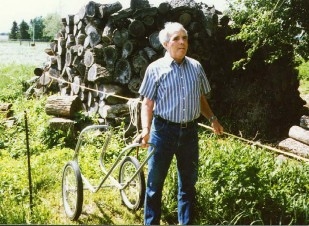
Wind Chimes
Wind chimes (such as those in the top left corner of Image 2 (AgrAbility, 2017)) can be used as a navigational aid. By placing windchimes with differing tones on different buildings around the farm, a person with low or no vision can get auditory cues to aid in navigating. This is especially useful in winter when ambient sounds are muffled by snow. This is another low-tech solution to aid in independence and safe navigation.
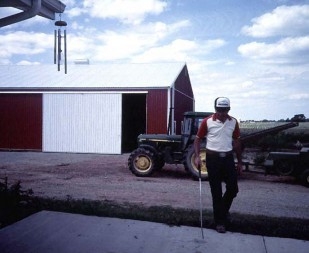
Optical Headband Magnifiers
Optical headband magnifiers (Image 3 (Donegan Optical, n.d.)) are specifically designed for people with low vision or vision impairments. These can be used on the go and used wherever you need them, they help magnify things so you can better see what is going on around you. They bring images closer and make them clearer. They come in a variety of different magnifications and they can come with lights to help illuminated dark areas for better clarity.
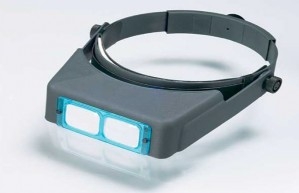
Portable LED Work Light
These portable lights (for example, Image 4 (Home Depot, n.d.) can be moved anywhere to help improve the lighting for any task. Some eye conditions are especially worse at night or under dark conditions, so using these lights will help make these types of situations easier. They come in a variety of sizes, brightness levels, and price ranges.
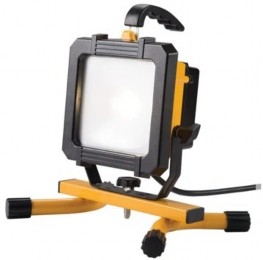
Click Ruler
Image 5 (Highland Woodworking, n.d.) shows a measurement tool that is used by extending the metal piece creates an audible click and each extension equals 1/16th of an inch. This allows the user to measure anything completely auditory, while maintaining the accuracy they would have if they were using vision. This can be used by people with different levels of visual impairment.
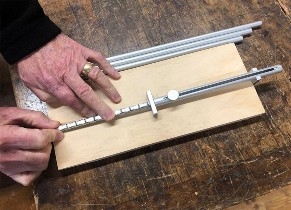
Hand-Held Laser Distance Meter
This is a handheld laser (Image 6 (Bosch, n.d.)) that is used to measure lengths and distances. There are many different options available based on need. These allow people with low visibility to measure distances accurately as the screen projects the numbers in a larger size. Some models can also read the dimensions out loud.
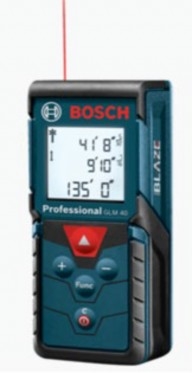
Mobility Talking GPS
There are many different models of talking GPS systems (for example, Image 7 (Corada, n.d.)) that can be pre-programed with different layouts. It allows for assistance by giving verbal directions, the current location of the user, and verbal surroundings to the person. These are made for people with decreased vision and blind people to help them maneuver areas safely.
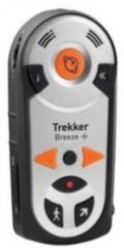
Phone Apps
There are many free applications available that can aid those with visual impairments. One example is TapTapSee (Image 8 (Cloudsight, n.d.)) For this app, all you have to do is download the app, take a picture or video of your surroundings, and it will verbally tell you what is around you.
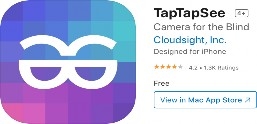
Conclusion
The assistive technologies included in this publication are just a few examples of assistive technologies that could be useful for farmers with vision impairments or blindness.
The National AgrAbility Toolbox offers hundreds of examples of assistive technologies for farmers, gardeners, ranchers, and agricultural workers with physical disabilities. Organized by category, this resource contains real-life examples from farmers across the country and showcases products and adaptations that farmers, gardeners, ranchers, and agricultural workers have used to overcome physical challenges. Visit the National AgrAbility Toolbox here: http://www.agrability.org/toolbox/
Additionally, the AgrAbility Virginia website highlights the work of AgrAbility Virginia, with success stories, information about the team, and resources that the team has developed for farmers, ranchers, gardeners, and agricultural workers. Visit the AgrAbility Virginia website here: https://agrability.alce.vt.edu/
References
AgrAbility. (2017, February 16). Rope Guide. National AgrAbility Toolbox. http://www.agrability.org/toolbox/?solution=295
AgrAbility. (2017, February 10). Wind Chimes. National AgrAbility Toolbox. http://www.agrability.org/toolbox/?solution=295
Bosch. (n.d.). Laser Measures. Bosch. https://www.boschtools.com/us/en/boschtools-ocs/laser-measures-23502-c/
Cloudsight. (n.d.) TapTapSee. TapTapSee. https://taptapseeapp.com/
Corada. (n.d.). HumanWare Trekker Breeze+ Handheld Talking GPS. Corada. https://www.corada.com/products/humanware-trekker-breeze-handheld-talking-gps
Donegan Optical. (n.d.) Donegan Optical Headband Magnifiers. Donegan Optical. https://doneganoptical.com/product-category/headband/
Highland Woodworking. (n.d.) Click Rule. Highland Woodworking. https://www.highlandwoodworking.com/click-rule.aspx
Home Depot. (n.d.). 2500 Lumen LED Portable Work Light. Home Depot. https://www.homedepot.com/p/All-Pro-2500-Lumen-LED-Portable-Work-Light-WL2540LP/205756054#overlay
*The authors assume no liability in connection with any use of the products discussed and make no warranty (express or implied) in that respect. References to products are not intended as endorsements to the exclusion of others that might be similar.
AgrAbility Virginia is funded by AgrAbility Project, USDA/NIFA Special Project 2019- 2022 (41590-22326) and administered by Virginia Tech, Virginia State University, Easter Seals UCP North Carolina/Virginia, Inc. and Virginia Cooperative Extension.
Visit us at www.agrabilityvirginia.org.
Virginia Cooperative Extension materials are available for public use, reprint, or citation without further permission, provided the use includes credit to the author and to Virginia Cooperative Extension, Virginia Tech, and Virginia State University.
Virginia Cooperative Extension is a partnership of Virginia Tech, Virginia State University, the U.S. Department of Agriculture (USDA), and local governments, and is an equal opportunity employer. For the full non-discrimination statement, please visit ext.vt.edu/accessibility.
Publication Date
October 14, 2021



